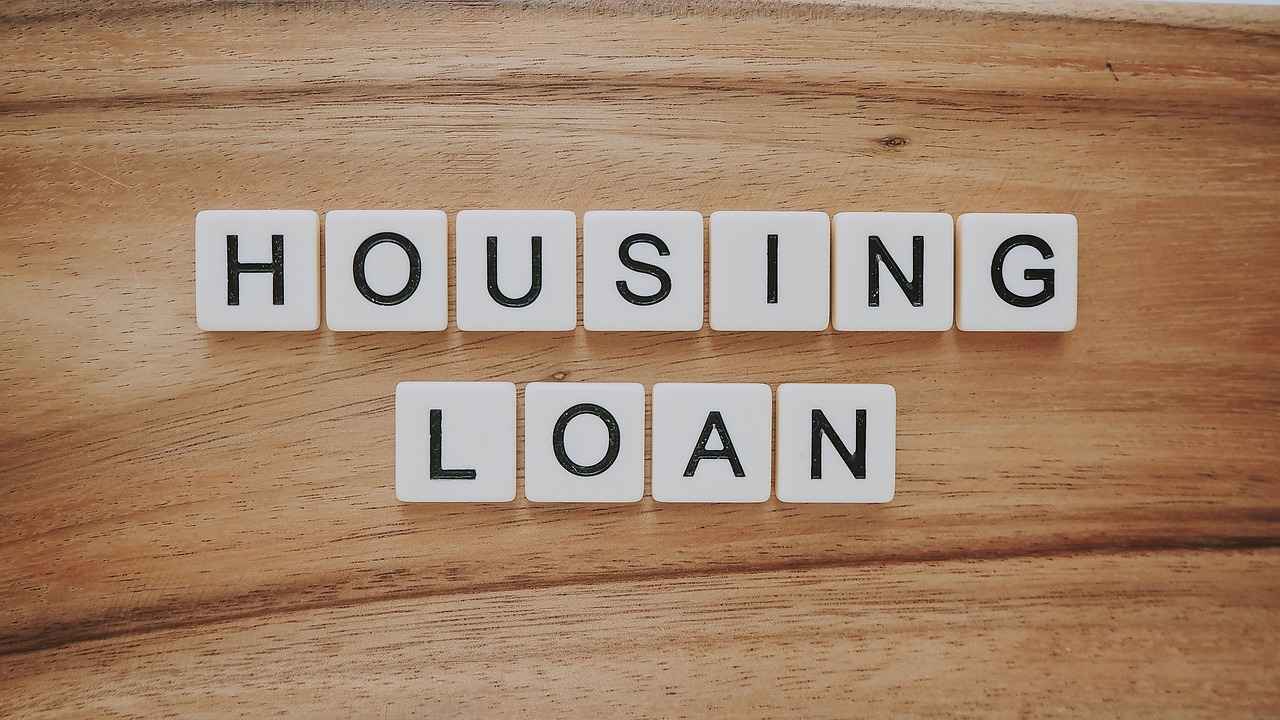This article provides a comprehensive guide on selecting the best personal loan tailored to your financial situation, covering key factors, tips, and expert insights for 2025.
In today’s financial landscape, personal loans have emerged as a popular choice for individuals seeking to meet various financial needs. Whether it’s consolidating debt, funding a major purchase, or covering unexpected expenses, understanding how to choose the right loan is crucial.
Personal loans are unsecured loans that allow borrowers to access funds without collateral. They typically come with fixed or variable interest rates and can vary in terms of repayment periods.
Before diving into the loan application process, it’s vital to assess your financial health. Start by evaluating your income, expenses, and credit score to determine your borrowing capacity.
Your debt-to-income (DTI) ratio is a key metric that lenders use to gauge your ability to repay a loan. To calculate your DTI, divide your total monthly debt payments by your gross monthly income. A lower DTI indicates better financial health.
A good DTI ratio typically falls below 36%. Lenders often prefer borrowers with a lower ratio, as it indicates less risk.
If your DTI is higher than desired, consider strategies such as reducing debt and increasing income. Paying off high-interest debts can significantly improve your financial standing.
Your credit score plays a significant role in determining the interest rates and terms you receive. Understanding how your score is calculated can help you make informed decisions when applying for a loan.
There are various types of personal loans available, each with unique features. It’s important to choose one that aligns with your financial goals.
Secured loans require collateral, while unsecured loans do not. Understanding the pros and cons of each can help you make the right choice for your situation.
Fixed-rate loans offer consistency in payments, while variable-rate loans can fluctuate. Consider your financial situation and risk tolerance when choosing between these options.
Choosing the right lender is crucial for a successful loan experience. Researching various lenders can help you find one that fits your needs.
The rise of online lenders has transformed the lending landscape. Compare the benefits and drawbacks of online lenders versus traditional banks to find the best fit for you.
Before applying, it’s essential to research lender reviews and ratings. This can help you avoid potential pitfalls and ensure a positive borrowing experience.
Understanding loan terms is essential for managing your repayment effectively. Familiarize yourself with key terms and conditions before signing a loan agreement.
Interest rates and associated fees can significantly affect the total cost of your loan. Make sure to compare rates and look out for hidden fees that could impact your finances.
The repayment structure of a loan can vary widely. Understanding different repayment options and the importance of flexibility can help you manage your loan more effectively.

Understanding Personal Loans
Understanding personal loans is crucial for anyone considering borrowing money. These loans are versatile financial products that can be utilized for a variety of purposes, including debt consolidation, home improvements, medical expenses, or even funding a vacation. The flexibility of personal loans allows borrowers to tailor their use according to their unique financial situations.
To make an informed decision, it is essential to grasp the structure, types, and terms associated with personal loans. Generally, personal loans can be categorized into two main types: secured and unsecured loans. Secured loans require collateral, such as a car or savings account, which can lower interest rates but poses a risk of losing the asset if payments are not made. On the other hand, unsecured loans do not require collateral, making them less risky for the borrower but often come with higher interest rates.
Furthermore, it is vital to consider the interest rate structure. Personal loans can feature fixed rates, where the interest remains constant throughout the loan term, or variable rates, which can fluctuate based on market conditions. Each option has its advantages and disadvantages, and understanding these can significantly impact your repayment strategy.
Another critical aspect to consider is the loan terms. These include the total amount borrowed, repayment period, and any associated fees. Knowing the terms will help you assess whether a loan aligns with your financial goals and budget. Additionally, always read the fine print to uncover any hidden fees or penalties for early repayment.
In summary, comprehending the nuances of personal loans is essential for making a wise borrowing decision. By understanding their structure, types, and terms, you can better navigate the lending landscape and choose a loan that suits your financial needs.

Assessing Your Financial Situation
Before you embark on the journey of applying for a personal loan, it is essential to thoroughly assess your financial situation. This evaluation will not only help you understand your borrowing capacity but also guide you in making informed decisions that align with your financial goals. Below, we break down the critical components of this assessment.
Your income is the foundation of your financial health. Begin by calculating your total monthly income, which includes not only your salary but also any additional sources such as bonuses, freelance work, or rental income. Keep in mind:
- Document all income streams for accuracy.
- Consider potential fluctuations in income if you are self-employed.
Next, take a close look at your monthly expenses. This includes fixed costs such as rent or mortgage payments, utilities, groceries, and discretionary spending. To get a clear picture:
- Create a detailed budget that lists all your expenses.
- Identify areas where you can cut back if necessary.
Understanding your expenses will help you determine how much you can comfortably allocate towards loan repayments.
Your credit score plays a pivotal role in determining your eligibility for a personal loan and the interest rates you will be offered. To assess your credit health:
- Request a free credit report from major credit bureaus.
- Review your report for any inaccuracies or outstanding debts that need addressing.
A higher credit score can significantly enhance your borrowing options, so it is wise to take steps to improve it if necessary.
After evaluating your income, expenses, and credit score, you can calculate your borrowing capacity. Consider the following:
- Your debt-to-income (DTI) ratio should ideally be below 36%.
- Assess the maximum loan amount you can handle based on your financial assessment.
This comprehensive evaluation will empower you to make informed decisions and choose a personal loan that aligns with your financial health.
Calculating Your Debt-to-Income Ratio
Your debt-to-income (DTI) ratio is a crucial metric that lenders analyze when determining your eligibility for a personal loan. This ratio helps them assess your ability to manage monthly payments based on your income and existing debt obligations. Understanding how to calculate your DTI is essential for making informed financial decisions.
To calculate your DTI, follow these simple steps:
- Calculate Your Monthly Debt Payments: Add up all your monthly debt obligations, including credit card payments, auto loans, student loans, and any other debts.
- Determine Your Gross Monthly Income: This is your total income before taxes and other deductions. Include all sources of income, such as salary, bonuses, and rental income.
- Use the DTI Formula: Divide your total monthly debt payments by your gross monthly income and multiply by 100 to get a percentage. The formula is: DTI (Total Monthly Debt Payments / Gross Monthly Income) x 100.
For example, if your monthly debts total $1,500 and your gross monthly income is $5,000, your DTI would be:
DTI ($1,500 / $5,000) x 100 30%
A DTI ratio of 30% is generally considered acceptable, but many lenders prefer a ratio below 36%. A higher DTI may indicate that you have too much debt relative to your income, which could affect your chances of loan approval or lead to higher interest rates.
Improving your DTI can enhance your loan prospects. To lower your DTI, focus on reducing existing debts and increasing your income. Strategies include paying off high-interest debts first or seeking additional income sources, such as part-time work or freelance opportunities. By actively managing your DTI, you can improve your financial health and increase your chances of securing favorable loan terms.
What is a Good DTI Ratio?
Your debt-to-income (DTI) ratio is a critical indicator of your financial health and is a key element that lenders evaluate when considering your loan application. A good DTI ratio typically falls below 36%. This figure represents the percentage of your gross monthly income that goes toward paying your monthly debt obligations, such as credit card payments, mortgage payments, and other loans. Understanding the implications of your DTI ratio can significantly influence your loan options and overall financial strategy.
When your DTI ratio is below 36%, it generally indicates that you have a manageable level of debt relative to your income. This can open up more favorable loan options for you, including lower interest rates and better terms. Lenders view borrowers with a lower DTI as less risky, which can lead to increased borrowing limits and more flexible repayment plans.
Conversely, if your DTI ratio exceeds 36%, you may face challenges when applying for loans. A higher DTI ratio signals to lenders that you may be over-leveraged, which can result in higher interest rates or even loan denial. In such cases, it’s essential to assess your financial situation and consider strategies for improvement.
- Reducing Debt: Focus on paying down existing debts to lower your DTI ratio. Prioritize high-interest debts first.
- Increasing Income: Explore opportunities for additional income, such as part-time work or freelance projects.
- Budgeting: Implement a strict budgeting plan to manage your expenses effectively and free up more income for debt repayment.
In summary, maintaining a favorable DTI ratio is crucial for accessing the best loan options available. Regularly reviewing your financial situation and making necessary adjustments can help you achieve and sustain a good DTI ratio, enhancing your borrowing power and overall financial stability.
Improving Your DTI Ratio
Improving your Debt-to-Income (DTI) ratio is essential for enhancing your financial health and increasing your chances of securing favorable loan terms. If your DTI ratio is higher than the recommended threshold, there are several effective strategies to consider. This section will explore practical steps to reduce debt and increase income, empowering you to take control of your financial future.
- Assess Your Current Debt: Begin by listing all your debts, including credit cards, loans, and any other obligations. Understanding your total debt load is the first step in identifying areas for improvement.
- Prioritize High-Interest Debt: Focus on paying off debts with the highest interest rates first. This will not only reduce your overall debt faster but also decrease the amount of interest you pay over time.
- Consider Debt Consolidation: If you have multiple debts, consolidating them into a single loan with a lower interest rate can simplify your payments and reduce your monthly obligations.
- Increase Your Income: Look for opportunities to boost your income, whether through a part-time job, freelance work, or selling unused items. Every extra dollar can help improve your DTI ratio.
- Review Your Budget: Examine your monthly expenses and identify areas where you can cut back. Reducing discretionary spending can free up funds to pay down debt more aggressively.
- Seek Professional Advice: If managing debt feels overwhelming, consider consulting with a financial advisor or credit counselor. They can provide personalized strategies to help you improve your financial situation.
By implementing these strategies, you can effectively lower your DTI ratio, making you a more attractive candidate for lenders and improving your overall financial stability. Remember, consistent effort and a clear plan are key to achieving your financial goals.
Understanding Your Credit Score
Your credit score is a crucial component of your financial profile, influencing not only the interest rates you receive but also the overall terms of your personal loan. Understanding how your credit score is calculated and its significance can empower you to make informed financial decisions.
How is Your Credit Score Calculated?
Credit scores are typically calculated using five key factors:
- Payment History (35%) – This is the most significant factor and reflects your track record of paying bills on time.
- Credit Utilization (30%) – This ratio compares your current credit card balances to your credit limits. A lower utilization rate is favorable.
- Length of Credit History (15%) – A longer credit history can positively impact your score, as it demonstrates your experience with credit.
- Types of Credit in Use (10%) – A diverse mix of credit types, such as credit cards, mortgages, and installment loans, can enhance your score.
- New Credit (10%) – This includes the number of recently opened accounts and inquiries. Too many new accounts can be a red flag.
Why is Your Credit Score Important?
A higher credit score can lead to more favorable loan terms, including:
- Lower Interest Rates: Lenders view higher scores as indicative of lower risk, often resulting in lower rates.
- Better Loan Terms: You may qualify for larger loan amounts and longer repayment periods.
- Increased Approval Chances: A strong credit score enhances your chances of loan approval.
In contrast, a lower credit score may lead to higher interest rates, stricter terms, or even loan denial. Therefore, it is essential to monitor and improve your credit score regularly. This proactive approach can better position you for financial opportunities in the future.

Types of Personal Loans
When considering a personal loan, it’s essential to recognize that there are various types available, each designed to cater to specific financial needs and circumstances. Understanding these types can significantly enhance your ability to make an informed decision that aligns with your goals.
Below, we outline the most common types of personal loans and their suitable use cases:
| Type of Personal Loan | Description | Best Use Cases |
|---|---|---|
| Secured Personal Loans | Loans backed by collateral, such as a car or savings account. | Ideal for borrowers with lower credit scores seeking lower interest rates. |
| Unsecured Personal Loans | Loans that do not require collateral, relying solely on creditworthiness. | Suitable for consolidating debt or funding large purchases. |
| Fixed-Rate Personal Loans | Loans with a constant interest rate throughout the repayment period. | Best for budgeting, as monthly payments remain stable. |
| Variable-Rate Personal Loans | Loans with interest rates that can fluctuate based on market conditions. | Good for those who anticipate interest rates will decrease. |
| Debt Consolidation Loans | Loans specifically designed to combine multiple debts into a single payment. | Helpful for managing high-interest debts and simplifying payments. |
| Payday Loans | Short-term loans with high fees, typically due on your next payday. | Should be used cautiously, primarily for emergencies due to high costs. |
Understanding the differences among these loan types is crucial for selecting the one that fits your financial situation. Whether you’re looking to consolidate debt, make a major purchase, or cover unexpected expenses, knowing your options can lead to better financial outcomes.
Secured vs. Unsecured Loans
When it comes to personal loans, understanding the distinction between secured and unsecured loans is crucial for making informed financial decisions. Each type of loan has its own set of advantages and disadvantages, which can significantly impact your borrowing experience and financial health.
Secured Loans are backed by collateral, which means that the borrower provides an asset, such as a home or a vehicle, as security for the loan. This collateral reduces the lender’s risk, often resulting in lower interest rates and more favorable terms. However, the major downside is that if you fail to repay the loan, the lender has the right to seize the collateral. This makes secured loans a suitable option for those who have valuable assets and are confident in their ability to repay the loan.
On the other hand, unsecured loans do not require collateral. Instead, lenders assess the borrower’s creditworthiness based on their credit score and financial history. While this type of loan offers the advantage of not risking personal assets, it usually comes with higher interest rates and stricter eligibility requirements. Unsecured loans are ideal for borrowers who may not have assets to pledge but have a strong credit profile.
| Feature | Secured Loans | Unsecured Loans |
|---|---|---|
| Collateral Required | Yes | No |
| Interest Rates | Generally Lower | Generally Higher |
| Risk of Asset Loss | Yes | No |
| Approval Requirements | Less Strict | More Strict |
In conclusion, the choice between secured and unsecured loans ultimately depends on your financial situation, risk tolerance, and borrowing needs. Carefully weighing the pros and cons of each type will help you select the loan that best supports your financial goals.
Fixed-Rate vs. Variable-Rate Loans
When considering a personal loan, one of the most critical decisions revolves around the choice between fixed-rate and variable-rate loans. Each option presents distinct advantages and disadvantages that can significantly influence your overall repayment strategy.
Fixed-rate loans offer the stability of consistent monthly payments throughout the life of the loan. This predictability makes it easier for borrowers to budget and plan their finances effectively. With a fixed interest rate, you are protected from market fluctuations, ensuring that your repayment amount remains unchanged even if interest rates rise. This can be particularly beneficial in a volatile economic environment.
On the other hand, variable-rate loans come with interest rates that can fluctuate based on market conditions. Initially, these loans often offer lower rates compared to fixed-rate options, which can lead to lower monthly payments at the start. However, the potential for rising rates means that your payments could increase over time, making budgeting more challenging. If you anticipate that interest rates will remain stable or decrease, a variable-rate loan could save you money in the long run.
| Feature | Fixed-Rate Loans | Variable-Rate Loans |
|---|---|---|
| Payment Stability | Consistent | Fluctuating |
| Initial Rates | Generally higher | Usually lower |
| Long-Term Cost | Predictable | Potentially lower or higher |
| Market Risk | No | Yes |
Ultimately, the choice between fixed and variable rates should align with your financial situation, risk tolerance, and long-term goals. By carefully evaluating these factors, you can make an informed decision that best suits your needs.

Finding the Right Lender
is a critical step in securing a personal loan that aligns with your financial goals. With numerous lending options available, it’s essential to conduct thorough research to identify a reputable lender that meets your specific needs.
Firstly, consider what type of lender best suits your situation. There are two primary categories: online lenders and traditional banks. Online lenders often provide a streamlined application process and competitive rates, while traditional banks may offer personalized service and established credibility. Assessing the pros and cons of each can guide your decision.
- Online Lenders: Typically faster processing times, often lower fees.
- Traditional Banks: Established reputation, potential for in-person consultations.
Next, evaluate the reputation of potential lenders. Look for reviews and ratings on trusted financial websites. Consider factors such as customer service, transparency, and the overall satisfaction of previous borrowers. Websites like the Better Business Bureau (BBB) and Trustpilot can provide insights into a lender’s reliability.
Another critical aspect is to compare loan offers. Once you have shortlisted a few lenders, request quotes and examine the terms and conditions carefully. Pay attention to interest rates, loan amounts, repayment terms, and any additional fees that may apply. This comparison will help you make an informed choice that best fits your financial situation.
Finally, don’t hesitate to ask questions. A reputable lender should be willing to address your concerns and provide clarity on any aspects of the loan process. Understanding every detail helps you avoid unpleasant surprises down the line.
By following these tips, you can confidently select a lender that not only meets your borrowing needs but also enhances your overall loan experience.
Online Lenders vs. Traditional Banks
The financial landscape has undergone a significant transformation with the emergence of online lenders. This shift has introduced new opportunities and challenges for borrowers, making it essential to understand the differences between online lending platforms and traditional banks.
Benefits of Online Lenders:
- Convenience: Online lenders operate 24/7, allowing borrowers to apply for loans from the comfort of their homes, without the need for in-person visits.
- Speed: Many online lenders offer quick approval processes, often providing funds within a day or two of application, which is significantly faster than traditional banks.
- Less stringent requirements: Online lenders may have more flexible eligibility criteria, making it easier for individuals with lower credit scores to secure financing.
- Competitive rates: Some online lenders offer lower interest rates and fees, especially for borrowers with good credit histories.
Drawbacks of Online Lenders:
- Lack of personal interaction: Borrowers may miss the personalized service and financial advice that traditional banks provide.
- Limited product offerings: Online lenders may not offer a wide range of financial products compared to traditional banks, which can limit options for borrowers.
- Potential for scams: The online lending space can attract fraudulent entities, making it essential for borrowers to conduct thorough research before choosing a lender.
Benefits of Traditional Banks:
- Established reputation: Traditional banks have a long-standing presence and credibility, often providing peace of mind to borrowers.
- Comprehensive services: Banks typically offer a wider range of financial products, including savings accounts, mortgages, and investment services.
- Personalized service: Borrowers can benefit from face-to-face consultations, allowing for tailored financial advice.
Drawbacks of Traditional Banks:
- Longer application processes: Traditional banks may require more documentation and take longer to process loan applications.
- Higher fees: Borrowers may face higher fees and interest rates compared to some online lenders.
- Stricter eligibility criteria: Traditional banks often have more stringent credit requirements, making it challenging for some borrowers to qualify.
In summary, both online lenders and traditional banks have unique advantages and disadvantages. Borrowers should carefully assess their financial needs and preferences, comparing options to find the best fit for their situation.
Evaluating Lender Reputation
When it comes to securing a personal loan, is a critical step that can significantly impact your borrowing experience. With numerous lenders available, understanding their reliability and customer satisfaction can help you avoid potential pitfalls.
Here are some essential tips to consider when assessing a lender’s reputation:
- Check Online Reviews: Start by looking at online reviews on platforms such as Trustpilot, Better Business Bureau, and Consumer Affairs. These sites aggregate customer feedback and can provide a broad perspective on the lender’s service quality.
- Look for Ratings: Pay attention to overall ratings and read individual reviews. A lender with a high rating and a significant number of positive reviews is generally more trustworthy.
- Examine Complaint History: Investigate any complaints filed against the lender. A high number of unresolved complaints can be a red flag, indicating potential issues with their service or policies.
- Ask for Recommendations: Seek advice from friends, family, or financial advisors who have experience with personal loans. Personal recommendations can provide valuable insights into the lender’s reliability.
- Research Regulatory Compliance: Ensure the lender is licensed to operate in your state and adheres to local regulations. This information can often be found on the lender’s website or through state financial regulatory agencies.
- Evaluate Transparency: A reputable lender should provide clear information about loan terms, interest rates, and fees. If the lender is vague or evasive, consider it a warning sign.
By following these tips, you can make a well-informed decision when selecting a lender. A thorough evaluation of a lender’s reputation not only helps you find a trustworthy partner but also enhances your overall borrowing experience.

Loan Terms and Conditions
When considering a personal loan, it is vital to have a clear understanding of . This knowledge not only helps you make informed decisions but also enables you to manage your repayment effectively. Below are key terms and conditions that you should be aware of before signing any loan agreement.
- Principal Amount: This is the initial sum of money borrowed. Understanding how much you are borrowing is crucial, as it directly influences your repayment schedule.
- Interest Rate: The interest rate is the cost of borrowing money, expressed as a percentage of the principal. It can be either fixed or variable, affecting your monthly payments and overall loan cost.
- Loan Term: This refers to the duration over which you will repay the loan. Loan terms can vary widely, typically ranging from a few months to several years. A longer term may result in lower monthly payments but can lead to higher total interest costs.
- Fees and Charges: Be aware of any additional fees associated with the loan, such as origination fees, late payment fees, or prepayment penalties. These can significantly impact the overall cost of the loan.
- Repayment Schedule: This outlines how and when you will make payments. Understanding the repayment frequency (monthly, bi-weekly, etc.) is essential for budgeting.
- Prepayment Options: Some loans allow you to pay off the balance early without penalties, while others may impose fees for doing so. Knowing your options can save you money in interest.
In addition to these terms, it is also important to consider default terms. Defaulting on a loan can have serious consequences, including damage to your credit score and potential legal action. Always read the fine print and ensure you fully understand your obligations before committing to a loan.
By familiarizing yourself with these key loan terms and conditions, you can make a more informed decision and manage your repayment effectively.
Interest Rates and Fees
When considering a personal loan, interest rates and associated fees are pivotal factors that can drastically influence the overall cost of borrowing. Understanding how to compare these rates and identify any hidden fees is essential for making informed financial decisions.
Interest Rates Explained
Interest rates represent the cost of borrowing, expressed as a percentage of the loan amount. They can be either fixed, remaining constant throughout the loan term, or variable, which can fluctuate based on market conditions. Generally, a lower interest rate translates to lower monthly payments and less paid in interest over the life of the loan.
Comparing Interest Rates
To effectively compare interest rates, consider the following:
- Obtain quotes from multiple lenders to understand the market range.
- Look for the Annual Percentage Rate (APR), which includes both the interest rate and any associated fees.
- Use online calculators to estimate your monthly payments based on different interest rates.
Identifying Hidden Fees
Many lenders may advertise low interest rates but include hidden fees that can increase the total loan cost. Common fees to watch for include:
- Origination Fees: Charged for processing the loan application.
- Prepayment Penalties: Fees incurred if you pay off the loan early.
- Late Payment Fees: Additional charges for missed payments.
Before accepting a loan offer, carefully review the loan agreement for any additional fees that may not be immediately apparent. Understanding the complete cost structure will empower you to make better financial choices.
By taking the time to compare interest rates and scrutinize fees, you can ensure that you select a personal loan that aligns with your financial goals and minimizes unnecessary expenses.
Repayment Terms and Flexibility
When considering a personal loan, understanding the repayment terms is crucial for effective financial management. The repayment structure of a loan can greatly influence your financial stability and overall satisfaction with the borrowing process. This section delves into various repayment options and emphasizes the importance of flexibility in managing your loan.
Loans typically offer several repayment options, including:
- Standard Repayment Plans: This is the most common structure, where borrowers make fixed monthly payments over a set period. This predictability can help with budgeting.
- Graduated Repayment Plans: Payments start lower and gradually increase over time. This option may be suitable for those expecting a rise in income.
- Income-Driven Repayment Plans: Payments are based on a borrower’s income and can adjust as income changes, providing a safety net for those with fluctuating earnings.
- Interest-Only Payments: Initially, borrowers pay only the interest on the loan, which can lower early payments. However, this can lead to larger payments later on.
Flexibility in repayment options is essential for a few reasons:
1. Financial Stability: Unexpected expenses can arise, and having flexible options can ease financial strain.2. Budget Management: Different repayment plans can accommodate varying financial situations, allowing borrowers to choose what fits best.3. Loan Modification: Some lenders offer the ability to modify repayment terms if financial circumstances change, which can be a lifesaver in tough times.
In summary, understanding the various repayment structures and the flexibility they offer can significantly enhance your loan management experience. When considering a loan, evaluate the repayment options available and choose one that aligns with your financial goals.
Frequently Asked Questions
- What is a personal loan?
A personal loan is a type of unsecured loan that can be used for various purposes, such as consolidating debt, financing a large purchase, or covering unexpected expenses. Unlike mortgages or auto loans, personal loans are typically not tied to any collateral.
- How do I determine how much I can borrow?
To figure out your borrowing capacity, assess your financial health by evaluating your income, expenses, and credit score. A good starting point is calculating your debt-to-income (DTI) ratio, which lenders often use to gauge your ability to repay the loan.
- What is the difference between secured and unsecured loans?
Secured loans require collateral, such as a car or savings account, which the lender can claim if you default. Unsecured loans, on the other hand, do not require collateral, making them riskier for lenders and often resulting in higher interest rates.
- How can I improve my credit score before applying for a loan?
Improving your credit score can be achieved by paying down existing debt, making payments on time, and checking your credit report for errors. These steps can help you secure better interest rates and loan terms.
- What should I look for when choosing a lender?
When selecting a lender, consider their reputation, interest rates, fees, and customer service. Research online reviews and ratings to ensure you choose a reputable lender that meets your needs.














